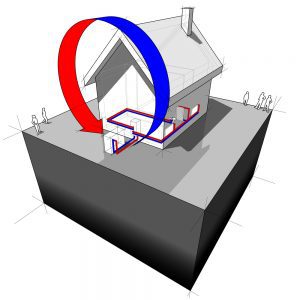Geothermal Reduces Your Carbon Footprint
Did you know that according to data supplied by the U.S. Department of Energy (DOE) Office of Geothermal Technologies, nearly 40% of all U.S. emissions of carbon dioxide (CO2) are the result of using energy to heat, cool, and provide hot water for buildings? This is about the same amount of CO2 contributed by the transportation sector. Compared to a conventional fossil fuel system, a standard 3-ton residential geothermal system produces approximately one less pound of carbon dioxide (CO2) for every hour of use. Over twenty years, the carbon footprint reduction would be equivalent to planting 120,000 acres of trees or converting over 58,000 cars to zero-emission vehicles.
In addition to exploring geothermal technologies, you might consider taking advantage of the “hot water generation” option. It will lower emissions even further by allocating heat removed from the home during the cooling season to provide hot water for household consumption. In addition to the environmental benefit, hot water costs can be reduced by as much as 30%.
Geothermal systems have a positive impact on the environment since they burn no fossil fuels and operate on a modest amount of electricity. They also do not emit greenhouse gasses, which are known to contribute to environmental air pollution. According to the United States Department of Energy and the Environmental Protection Agency, geothermal systems are the most environmentally friendly way to heat and cool your home.








